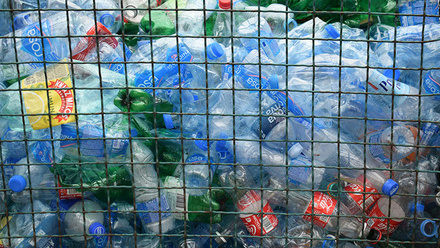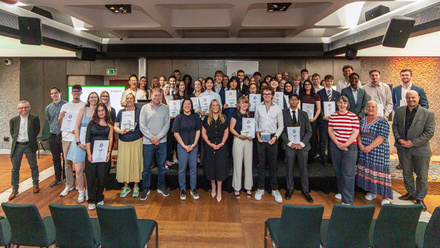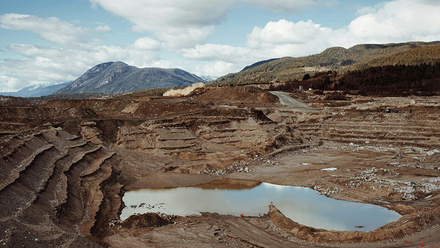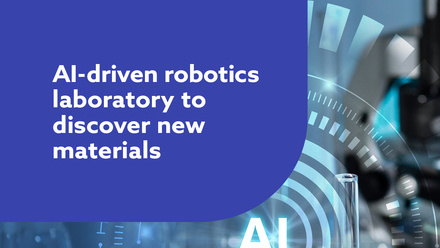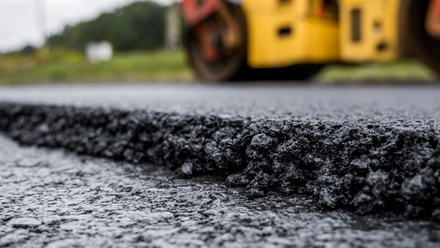Tightening loose ends for a circular economy
Dr Christopher Pilgrim MIMMM loops us through Innovate UK’s Circular Economy Innovation Network, with examples from the aluminium, chemicals and wool communities.
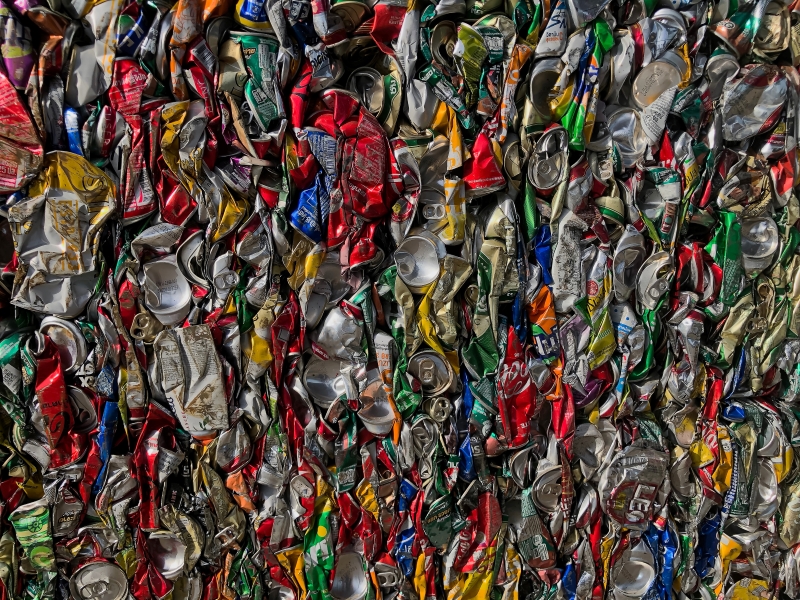
The circular economy has the potential to maintain economic prosperity while managing finite resources, decoupling growth from resource use. Generally positioned as a technology-focused concept, it enjoys positive reception by organisations across all areas of the economy.
Despite this, adoption remains stagnant, possibly even in decline. According to the 2023 Circularity gap report, produced by the Circle Economy Foundation, the most recent global circularity rate stands at 7.6%, down from 9.1% in 2018. It often seems that approaches taken to purportedly encourage circularity ultimately perpetuate the linear economy.
In addition, efforts towards sustainability can sometimes be at odds with a circular economy. For example, products are developed that combine a complex mixture of materials to reduce the carbon footprint with little consideration for the recovery of those materials at the end-of-life stage.
The real challenge with the adoption of a circular economy is therefore not in technical innovation but in changing mindsets. We need a more fundamental approach, considering the entire system. This will have a profound effect on how the materials supply chains operate.
The Circular Economy Innovation Network was launched by Innovate UK to address these issues, and covers three eclectic communities – aluminium, chemicals and wool – facilitating communication, connection and collaboration to draw out both common and community-specific challenges and opportunities.
The network was created to cover three focus areas – design, recovery and business models. Each is distinct but interrelated.
Design, recovery and business models
Did you know?
According to the Driving Ambitions report from the World Economic Forum, the circular economy approach enables automotive companies to increase revenue per vehicle by 15-20 times the sales price, and significantly improve profitability by maximising lifetime performance.
Source: Driving Ambitions: The Business Case for Circular Economy in The Car Industry
In the current linear economy, products are typically designed for sale in a single transaction, so much of the emphasis is on product value at the point of sale.
Product design is driven by cost or performance with little regard for end-of-life. When designing a new product, designers have little incentive to consider what happens to the material after the transaction – in effect, that is not the manufacturer’s problem. But this mindset loses sight of a potentially valuable resource.
It seems perceptions are starting to change, perhaps through legislation like Extended Producer Responsibility, or the increasing awareness of potential restrictions to supply in a global market.
As reliance on scrap or recovered material increases, resilient businesses will need to ensure their supply. Consequently, business models are beginning to shift to react to this change.
Software-as-a-service is commonplace, but there are increasing examples of products as a service. Through this approach, the value of the product is not exchanged in a single transaction but through longer-term contracts.
As a recent example, in 2022, Electrolux launched its appliance-as-a-service programme, whereby landlords pay a monthly fee and Electrolux installs, maintains and repairs the products, prolonging the appliance life. While rental models have been available for some time, involving the manufacturer means they have a greater vested interest in the product’s full lifecycle.
According to the Driving Ambitions report from the World Economic Forum, the circular economy approach enables automotive companies to increase revenues per vehicle by 15-20 times the sales price and significantly improve profitability by maximising lifetime performance.
The servitisation model is also moving up the supply chain and now materials-as-a-service is gaining traction – with thyssenkrupp Materials UK recently launching such a model.
Here, the material producers play a greater role in the supply chain, and ultimately the manufacturer pays to access the materials while they are in service. Adopting circular business models means the design and recovery follow naturally. In this way, optimal value is extracted from the materials throughout their life rather than in a single transaction.
The Innovate UK network explores the interrelationship between these three areas within the three materials communities to help understand the opportunities across many supply chains.
Why aluminium?
Aluminium is increasingly important to society and is the second most-used metal in the world by mass due to its unique properties, durability, corrosion, resistance and flexibility. Demand is set to grow because of its use in the net-zero transition, including electric vehicles and solar panels.The environmental impact of aluminium is driven by its primary production. It takes an average of four-to-five tonnes of ore bauxite to produce one tonne of aluminium, resulting in significant impacts on the natural environment. It is a carbon-intensive process, particularly due to the amount of electricity required for smelting.
Recycling of aluminium is well established across multiple countries, including in the UK. It brings significant benefits, reportedly reducing the carbon footprint by up to 95% in comparison to primary production. However, there is currently limited capacity for reprocessing in the UK, meaning that, overall, the UK imports aluminium at almost 50% higher value than it exports.
The national economy is therefore not benefiting from the opportunity of recycling aluminium. There are ongoing efforts to address this imbalance, but greater emphasis on tighter loops is needed to reap the greatest environmental and economic benefit.
As with the overall transition to the circular economy, this cannot be done all at once. A measured timescale is required to develop the current infrastructure and market conditions.
In the short term, the focus needs to be on closing the gaps in knowledge and data. As previously mentioned, the circular economy has broad support but general knowledge on the subject is limited.
Closer collaboration is required between industry, solution providers, academia and, perhaps most importantly, along the supply chains. For example, BMW and Rio Tinto, Porsche and Hydro, and, in the UK, Watt Electric Vehicles, have signed agreements related to the supply of lower-embodied-carbon aluminium.
Such agreements help encourage the required capital to invest in new technologies and start to open opportunities for tighter circular loops, not just in recycling, but remanufacturing and refurbishment.
In the medium term, the knowledge and data can be used to change the mindsets of both industry and end-users to value circularity and demand its practice. This will likely mean a move away from ownership models towards leasing ones, encouraging materials upkeep for the longest time.
There may be trade-offs in functionality, but there will be opportunities to mitigate this in design. For example, research is underway to design aluminium alloys that use impurities to enhance alloy strength.
There also may be trade-offs in upfront costs, but business models can be created to mitigate this over the life of a product.
Design
The aluminium sector can build on a generally positive public reception to further reduce environmental impact through improved design. In the short term, Life Cycle Assessment information should be collated and coordinated to determine where best practices or problems exist to learn from as a sector.
Currently, calculation methods are inconsistent and varied, and CO₂e does not take into consideration other environmental impacts or the material’s density. As a result, comparing different materials’ environmental credentials is confusing and does not clearly communicate the benefits of lower-impact materials. The aluminium sector can contribute to aligning definitions and terminology to design certifications that include circularity and encourage demand for UK production.
Also in the short term, there is a need to re-evaluate product and alloy design to consider the compositions of recovered aluminium material. There are examples where this has started in different industries. Hydro have developed the first 100% recycled aluminium alloy for building systems. A project led by Constellium is trialling methods to increase recycled content in automotive applications. Such developments can encourage wider adoption of more circular design.
In the medium term, improvements to the recycling system need to be supported by product designs that facilitate disassembly and encourage keeping the material
in a higher-value state for longer.
Recovery
As the environmental impact of aluminium is driven by primary production, it is critical to maximise its recovery at its highest value state to reduce additional processing – which requires energy and produces waste.
Through transformation to a material-as-a-service model, suppliers will want to trace their material through its lifetime. Digital systems, including blockchain, are being trialled and used to track materials, increasing the visibility of the material in use and facilitating recovery.
The volumes of recovered material do not satisfy the demand for new ones, driving the need for increased recovery systems. In many cases, the most economically viable route is by shredding the material, sorting and segregating it. Improvements have been made in sorting technology to enable sorting down to individual grades, but these are not deployed at scale.
Meanwhile, the current export of salt slag waste from recycling is a lost resource that involves transporting hazardous waste due to the UK’s lack of infrastructure, although efforts are underway to address this in the near term.
Business models
The transformation of business models is perhaps the most challenging aspect. By starting with a business model based on a circular economy, design and recovery will follow.
In an economy driven by increased consumption at ever-lower unit cost, the UK cannot compete and will not achieve its climate commitments. Forward-thinking businesses are recognising this and, perhaps primarily driven by their net-zero targets, are making changes.
For large corporations that must report their emissions, the materials in their products and packaging make up a significant portion of their supply chain emissions. This has become a lever to encourage innovation in the supply chain. For example, the British Aluminium Consortium for Advanced Alloys is re-imagining the supply chain to secure future aluminium recycling capacity in the UK.
Innovate UK has conducted projects exploring how the demand for more sustainable materials can accelerate innovation. A pilot programme is currently testing how Innovate UK can encourage demand-led innovation aimed at decarbonising concrete.
The tide is turning but, for such a fundamental transformation, innovative thinking is required. New people with new skills need to be drawn into the sector – the aluminium sector has a compelling case for the impact that a career in the field could make.
The emergence of technologies like artificial intelligence, alongside the implementation of digitisation, creates a wealth of exciting opportunities in these established industries. Collaboration across wider stakeholder communities will embrace these new skills and allow new business model opportunities to be identified and implemented.
Find out more about the Action Plan for Aluminium. Also see Materials World, July/August 2022, for an article on a blueprint for ‘greener’ aluminium.
Chemicals and defossilisation
The chemical industry needs to defossilise. Carbon is emitted during the manufacture of organic chemicals and is essential to forming the backbone of organic chemicals. This makes full decarbonisation impossible.Therefore carbon presents us with a supply and demand issue where we need to move away from the current sources of virgin, fossil-based carbon, while continuing
to meet the demands of a growing worldwide population.
Carbon capture and utilisation is an opportunity to take a step towards a circular carbon future, where we use this vital resource in a way that does not continue to negatively impact the environment.
The UK chemicals sector has a pivotal role in achieving net-zero and a circular economy, and it needs disruptive step-changes to become more sustainable, globally resilient and competitive.
Through the capture and utilisation of industrial emissions, these sources of carbon can be used to produce higher-value, lower-carbon footprint chemicals and reduce the sector’s reliance on virgin fossil feedstocks.
The use of industrial waste gases as an alternative carbon source can also help meet our demand for carbon and lower scope 1, 2 and 3 emissions across the supply chain.
An action plan developed through the Innovate UK Circular Economy Innovation Network sets the vision and aims of the community. It identifies key challenges
for industrial clusters and dispersed sites:
- Circular design – establishing the data required and identifying the key opportunities to create scalable circular chemical supply chains.
- Circular business model – generating new circular and sustainable business models across supply chains that establish the economic, environmental and social case for manufacturing in the UK.
- Circular recovery – determine the economic, technical, and environmental capabilities of existing and emerging carbon capture and chemical transformation technologies to drive increased investment in collaborative projects with industrial clusters and at dispersed sites.
- Government framework for circularity – create a policy, regulatory and standards environment to drive behavioural change and make long-term UK investment attractive.
Find out more about the Action Plan for Chemicals
Changing perceptions of wool
Wool is in abundance in the UK – according to British Wool, around 32mln kg are produced annually in the UK alone. Wool is a natural by-product of the sheep industry, of which the primary product is meat. It is collected annually from shearing, which is essential to ensure the animals do not overheat in the warmer summer months.Wool’s natural properties complement circularity in a significant number of ways. Raw wool is a complex material with unique properties – it is renewable, biodegradable in soil and water, antibacterial, insulating, fire retarding, able to absorb water or oil without feeling wet, fertilising, soil stabilising and aerating. Wool therefore has a high potential to replace non-recyclable or non-recoverable plastics in industries such as packaging, construction, horticulture and agriculture, and is suitable for reuse and recycling.
So why aren’t we using wool as standard practice? One of the key findings of the wool community as part of Innovate UK’s Circular Economy Innovation Network, has been that awareness of its properties needs to increase, with most of the population simply not aware of its versatility and associating it purely with itchy jumpers.
The drive to ensure that these properties are both recognised and used is underway. Wool is starting to be recognised much more widely as a smart technical fibre that is incredibly versatile, while having little to no adverse effects on the environment.
There are indeed over 80 breeds of sheep in the UK, each of which has a different kind of wool with different properties suited to an array of uses, ranging from fine wools comparable to merinos all the way to coarse wool that is perfect for use in insulation.
Innovations using wool are becoming more commonplace. Woollen products on the market now include tree guards – making them fully biodegradable – and rope on which mussels are being grown. There are also research projects underway looking at how the properties can be adapted, such as using enzymes to soften naturally coarser wools for finer applications in textiles.
Find out more about the Action Plan for Wool. Also see previous Materials World articles on packaging and seaweed farming using wool.
Connect with the Innovate UK Circular Economy Innovation Network.


